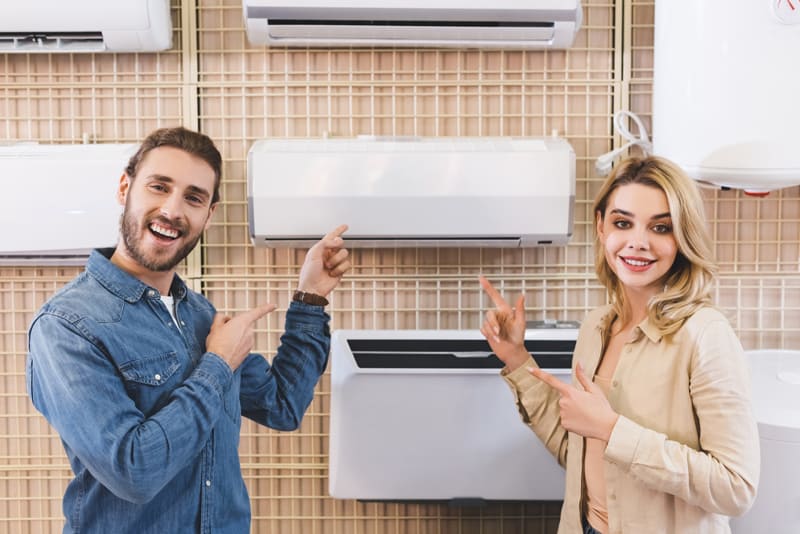Updating your HVAC is a major investment in your home. It’s one of the biggest upgrades you can make as a homeowner. HVAC upgrades are expensive and some HVAC installations can turn your home into a construction zone. You need to be sure that you’re buying the right system for your needs, budget, and climate.
And that’s not always easy. The best HVAC for you will depend on your local climate and seasonal patterns, as well as your budget and the infrastructure already present in your home. Here’s what you need to know about the different types of HVAC systems, how much they cost, and when to choose each one.

Types of HVAC Systems
There are four primary types of HVAC systems: ductless, split, geothermal, and packaged. Split systems, which combine a furnace and a central air conditioner, are the most common. Split systems typically move hot or cold air through the house via ductwork, but that isn’t the case for a ductless system.
Ductless systems consist of individual heating and cooling units in each room. Packaged HVAC systems include both heating and cooling elements in one unit installed outside. Geothermal systems, or heat pumps, pull warmth from the ground in the winter and reverse the process in the summer, pulling heat from your house.
Cost of a New HVAC System
When you’re shopping for a new HVAC system, cost can be a primary concern. You shouldn’t necessarily buy the cheapest HVAC system available if you can help it. You want your new HVAC to last a long time, so buy a quality brand. If you’re low-income, elderly, or disabled, you may qualify for federal or state assistance paying for a new HVAC. Sometimes power companies offer financial assistance with HVAC installation, too, like the APS rebates for HVAC installation costs available to some customers in Arizona.
A new HVAC system costs an average of $7,000. Costs can vary a lot depending on what kind of system you’re installing, whether you’re replacing the whole system, and whether you need to replace peripheral components like ductwork. Here’s how average costs break down by system:
● Furnace: $2,600 to $63,000
● Air conditioner: $3,800 to $7,500
● Ductless: $2,000 to $14,500
● Heat Pump: $4,100 to $7,200
● Boiler: $3,500 to $7,700
If you need to repair or replace ductwork, you could add another $500 to $2,000 to the total cost of your HVAC installation. Try to consider durability and longevity more than price when you’re installing an HVAC system. It may be cheaper to install the same kind of system you had before, especially if you already have ductwork in place for it. But a switch to a new type of HVAC system can be worthwhile if it lowers your energy consumption significantly.
Other Factors to Consider
The most important thing to consider when you’re shopping for an HVAC is the climate. If you live in a climate that’s warm all year round, you don’t need the heating component. If you live in a very cold, very northern climate, you may want to forgo central air conditioning in favor of more robust heating, such as a gas or electric furnace supported by a heat pump.
You also need to make sure the unit you get has the capacity to handle your home’s needs. Figure out how many British Thermal Units (BTUs) you need to heat or cool your house, and buy a unit that can meet those needs. You may want to save your future self some expense and trouble and buy a low-maintenance, efficient system. Heat pumps are perhaps the most efficient, and can help you realize real savings in heating and cooling costs, even though they tend to be on the expensive side and require you to tear up your lawn in order to install the underground pipes required. No matter what system you choose, look for a Seasonal Energy Efficiency Ratio (SEER) of at least 15.
Do you have any household members with asthma or allergies? You may want to choose an HVAC that will help improve your indoor air quality – one with a HEPA filter or a UV light. You may also want to choose an HVAC option with a programmable thermostat, so you can set your HVAC to operate only when you’re at home and save money on heating and cooling costs.
An HVAC is such a big purchase, and it’s a decision that can’t be taken lightly. Take care to choose the right HVAC for your needs, so you can stay nice and cozy at home.
